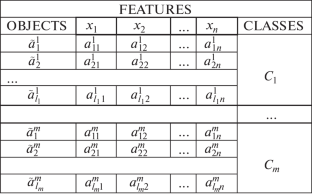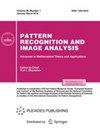逻辑分离:模式识别的离散建模
摘要
摘要 本文介绍了亚美尼亚 "离散模式识别建模"(DM-Lab)研究小组工作的历史分析调查。该研究小组成立于 1973 年,由世界公认的科学家尤里-伊万诺维奇-茹拉夫列夫(Yurii Ivanovich Zhuravlev)指导,并由他以前的学生列翁-阿斯兰扬(Levon Aslanyan)领导。亚美尼亚对计算数学和计算系统的关注始于控制论作为研究方向的时代,以及安德拉尼克-约瑟菲扬和谢尔盖-梅尔盖良等伟大科学家和决策者的名字。20 世纪 50 年代初,该地区成立了大量高科技和国防相关机构,并围绕埃里温数学机械研究所、科学院计算机中心和埃里温国立大学形成了理论和科学集群。这一时期,在苏联这个大国内部进行了密集的人才和学生交流。里马-波德洛夫琴科(Rimma Podlovchenko)、拉菲克-托诺扬(Rafik Tonoyan)、伊戈尔-扎斯拉夫斯基(Igor' Zaslavski)、尤里-舒库里安(Yuri Shoukourian)于 70 年代开始在埃里温国立大学任教。这些发展的成果之一是在亚美尼亚成立了由新西伯利亚和莫斯科国立大学校友组成的DM-Lab,由列冯-阿斯兰扬领导,并由俄罗斯联邦院士尤里-伊万诺维奇-茹拉夫列夫进行全球监督。通过进一步的研究和教育活动,在亚美尼亚和俄罗斯联邦科学院计算机中心理事会进行了候选论文和博士论文答辩。DM-Lab 小组最初的成员包括 Gevorg Tonoyan、Levon Asatryan 和 Vilik Karakhanyan。哈斯米克-萨哈克扬、弗拉基米尔-萨哈克扬、伊琳娜-阿尔塞尼扬、列冯-卡扎扬和许多年轻的博士生也是该小组的成员。DM 实验室的研究方向过去和现在都与模式识别理论有关--形成和分析学习集的数学模型,研究它们的特性,如类的紧凑性假设,等运算;形成类之间相互关系的逻辑,逻辑分离;建立数据挖掘领域的新方法等。所有这些研究都涉及多年来的深入研究,涉及 n 维联合立方体和一般网格的几何、布尔函数最小化、离散优化问题以及数据科学和人工智能的算法研究等相关主题。该小组的国际关系和活动包括:长期代表亚美尼亚参加国际标准化组织的技术小组,代表亚美尼亚参加欧洲理事会的信息和通信技术研究计划,成为 ITHEA 虚拟研究所及其会议和出版社的成员。在这些年里,实施了 10 多个研究项目。这些项目得到了联合国开发计划署、北约研究、INTAS、欧洲委员会 Esprit、IST 和 Horizone、RFR 以及其他国际和地方来源的资助。小组成员通过了 16 篇候选论文和 2 篇博士论文答辩。

Abstract
Herein, a historical analytical survey of work of “Discrete Modelling of Pattern Recognition” (DM-Lab) research group in Armenia is presented. The group is since 1973, supervised by worldwide recognized scientist Yurii Ivanovich Zhuravlev and lead by his former student Levon Aslanyan. The general start of attention to computational mathematics and computational systems in Armenia is concerned with the times of cybernetics as a research direction, and the names of great scientists and policy makers, such as Andranik Iosifyan and Sergei Mergelyan. In early 1950’s a large number of HighTech and defense related organizations were established in area, and their theoretical, scientific cluster was formed around the Yerevan Research Institute of Mathematical Machines, and Computer Center of Academy of Sciences and Yerevan State University. This was the time for intensive stuff and student exchanges inside the larger country USSR. Rimma Podlovchenko, Rafik Tonoyan, Igor’ Zaslavski, Yuri Shoukourian started teaching at Yerevan State University in 70’s, a number of students were delegated to the recognized cybernetical centers, in Moscow, Kiev, Novosibirsk. And one of the results of these developments was appearance of DM-Lab in Armenia, composed by alumnus of Novosibirsk and Moscow State Universities, led by Levon Aslanyan, and supervised globally by RF Academician Yuri Ivanovich Zhuravlev. Further research and education activities lead to defenses of candidate and doctoral dissertations, in Armenia, and at the council of Computer Center of Academy of Sciences of Russian Federation. The initial stuff of DM-Lab group included Gevorg Tonoyan, Levon Asatryan, Vilik Karakhanyan. Local members of the group were Hasmik Sahakyan, Vladimir Sahakyan, Irina Arsenyan, Levon Kazaryan and large number of young PhD students. Research directions at the DM-Lab were and are related to the pattern recognition theory – to mathematical models of forming and analyzing learning sets, studying their properties such as the class compactness hypothesis, in terms of isoperimetry; to forming the logic of interrelations of classes, in terms of logic separation; setting up new approaches in data mining area, etc. All these studies involve intensive research over the years, addressing topics related to the geometry of n-dimensional unite cube and lattices in general, Boolean function minimization, discrete optimization problems, and algorithmic studies coming from data science and artificial intelligence. International relations and activities of the group includes: long term representation of Armenia in the ISO technical groups, representation of Armenia in ICT research programmes of European Council, membership at the ITHEA virtual research institute with its conferences and publishing house. 10’s of research projects were implemented during these years. Projects were funded by UNDP, NATO Research, INTAS, EC Esprit, IST and Horizone, RFBR, and other international and local sources. 16 candidate and 2 doctoral theses were defended by the group members.

 求助内容:
求助内容: 应助结果提醒方式:
应助结果提醒方式:


